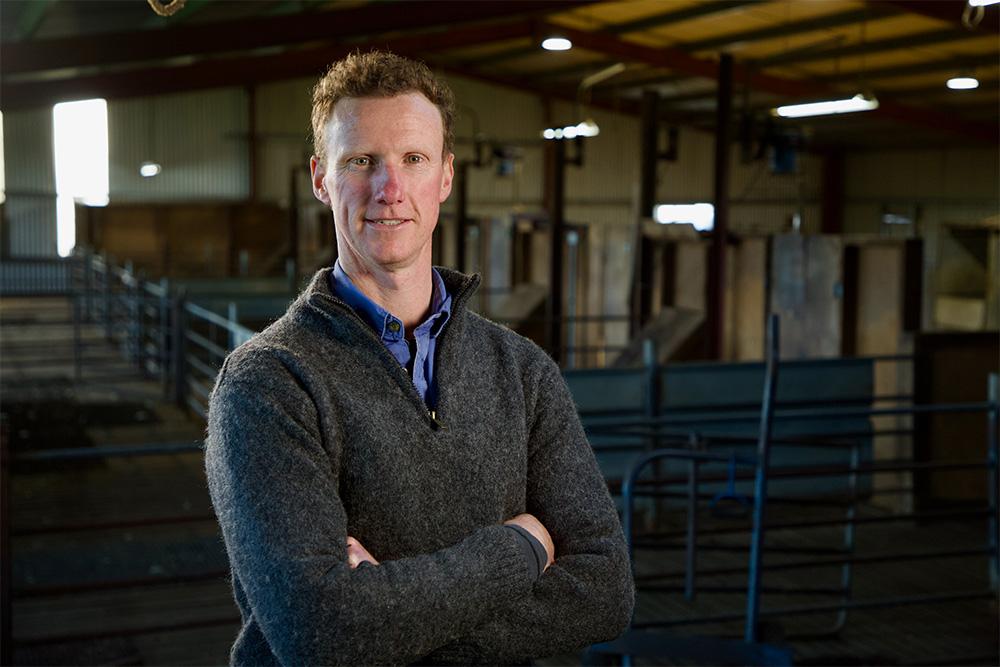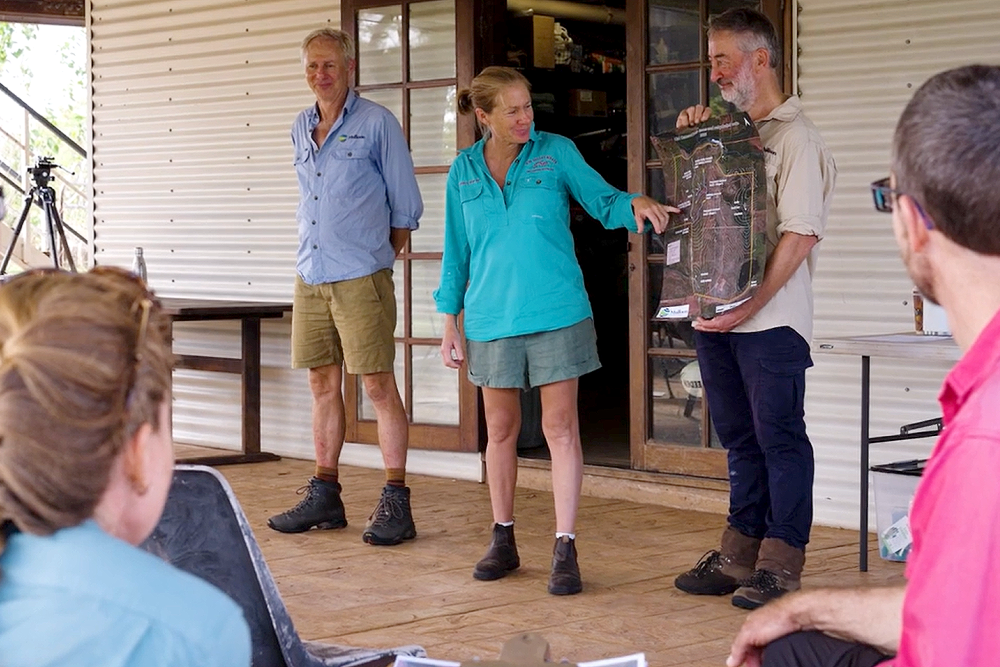Across Australia, First Nations farmers and land managers are leading a collaborative movement that blends cultural knowledge, sustainable land stewardship, and community-driven innovation to build resilience in the face of drought and climate change. Through the Future Drought Fund delivery partner Outback Academy, producers and community members came together for a series of regional and national meetings, connecting First Nations farmers to develop locally relevant techniques and strengthen drought and climate resilience. This included native food enterprises and cultural burning, supported by training, mentoring, business planning and on-ground extension support.
Neville Atkinson, a Yorta Yorta man from north-east Victoria and Outback Academy’s Partnerships and Relationships Manager, reflects on the deep-rooted cultural principles that guide First Nations relationships with Country. “If you don’t respect it and treat it right, it’s going to give up on you”, Neville says. This ethos of care and reciprocity is central to farming practices developed and shared across regions via these meetings.
The Outback Academy model connects First Nations farmers and land managers so that they are not operating in isolation. Through networking events, workshops and training opportunities, participants have been able to apply new ways of thinking and working to their businesses and become part of a community where they can seek support and share information.
For many Traditional Owners, the journey into agriculture has come with unique challenges. As Chris Nicholson of Goulbourn Broken Catchment Management Authority highlights, “this project is particularly important to First Nations farmers, or Traditional Owners, because over time, a lot of these Traditional Owners have acquired agricultural land but haven’t had the support to actually develop that land.” The limited access to tailored advice, infrastructure, and networks has historically restricted opportunities for economic self-determination and sustainable growth.
Gay Therese Baker of Gap Flat Native Foods near Mount Murramurrangbong, explains “It’s been really, really brilliant to be involved with Outback Academy and other farmers, for the social networking, and to know that you are not alone. As an Aboriginal farmer, I’m now part of an Australia-wide, a worldwide organisation.” This sense of belonging and shared purpose among First Nations agricultural communities not only strengthens individual and collective resilience, but also builds a powerful network of support, collaboration, knowledge exchange and cultural pride - laying the foundation for scalable community-led change that drives stronger social cohesion, sustainable economic development, and environmental outcomes across regions.
Chris Nicholson says it’s also a demonstration of the way the 8 national Drought Resilience, Adoption and Innovation Hubs can collaborate across state borders, providing extension advice and on-ground support to Traditional Owners looking to develop business plans in the face of a drying climate. “We’re incorporating Traditional Owner knowledge and modern-day science in agriculture together, for a better outcome”, he says.
This connected-via-community approach is being adopted across the FDF, supporting First Nations people to not only build drought resilience, but also strengthen cultural connections, create economic opportunities, and foster community leadership. By combining traditional knowledge with contemporary tools, these producers are shaping a more inclusive and sustainable future for Australian agriculture.
See how Outback Academy are facilitating networks for First Nations farmers and land managers to build resilience in their communities.
28 September 2023
Video duration: 5 mins 27 secs
Introduction
This is the transcript of a video case study produced by the Australian Government's Future Drought Fund (FDF) on a series of regional and national meetings coordinated by Outback Academy. The video features Outback Academy program participants. This project was funded by the Australian Government's Future Drought Fund – Networks to Build Drought Resilience program, a part of their Communities funding pathway. The project was delivered by Outback Academy in collaboration with FDF delivery partner the Foundation for Rural and Regional Renewal (FRRR).
[Recording begins]
Music plays
Neville Atkinson [0:25]
Aboriginal society has existed in Australia, in this dry continent, you know, for over 80,000 years. So you know, developing a personal, intimate knowledge of this country and its natural assets, we’d obviously have learned something out of that. I remember, as an example, my grandfather, so we would be out collecting eggs, remember him saying that you don’t take them all, you take one. Because otherwise if you take them all, they’re not going to be there next year. Same applies to getting sustenance from the land. If you don’t respect it and treat it right, it’s going to give up on you.
Jeanette Crew [1:16]
I’m a Wamba Wamba Mutthi Mutthi woman. We own a property at northwest of Deniliquin. We are using saltbush as our signature ingredient in different products. Recently we were talking about it to one of the neighbours who said, I’ve got a bit of a wasteland down on the back of my property down near the river, and I thought, well that’s not actually wasteland, that’s probably the most valuable for us because most of our medicines grow there. So to other people it’s waste, to us it’s not.
Gay Therese Baker [1:55]
My property is on the back of Mount Murramurrangbong State Forest. We have a beautiful eastern view, with the Northern aspect. It’s only five acres, and I’m establishing a native food farm in conjunction with Dookie University. Native foods are perfectly adapted to our Australian conditions.
Chris Nicholson [2:20]
This project is particularly important, to the First Nations farmers or Traditional Owners because over time a lot of these Traditional Owners have acquired agricultural land but haven’t had the support to actually develop that land.
Neville Atkinson [2:34]
We put an application in for the Future Drought Fund to support the conversation that we’re already having, but needed to broaden that out on resilience, food sustainability, farming practices that are now, and what that might look like going forward in terms of you know addressing drought. And you know, you also address their own relationships at a local level, providing jobs, opportunity, training and development and get an economic outcome that improves their lives as well. So we had that conversation, we brought together all those different Aboriginal farmers and connected partnerships we have along the Murray Corridor, NSW, Victoria, South Australia and southwest Western Australia.
David Crew [3:20]
And I think that’s one of the big things that Outback Academy has been able to do, is to draw people together to actually build that relationship and trust that we can have proper communication and open and honest communication, not just a presentation of ideas.
Chris Nicholson [3:36]
Future Drought Fund has enabled the various Drought Hubs to collaborate together. It sort of diminishes those borders and allows us to share information across all three states. We’ve been able to provide extension advice and on-ground support to our Traditional Owners as they sort of develop business plans for their property about how they’re going to manage those properties in the future, particularly during the dry seasons. We’re incorporating Traditional Owner knowledge and modern day science in agriculture together for a better outcome.
Jeanette Crew [4:10]
Through our involvement with Outback Academy, we’re going to get some bees, we going to get some beehives, we’ve done some training in beekeeping, so that’s going to be quite an exciting thing to go through.
Neville Atkinson [4:24]
The uniqueness of our model is we’re connecting all these farmers up together. They don’t operate in isolation.
Gay Therese Baker [4:31]
It’s been really, really brilliant to be involved with Outback Academy and other farmers for the social networking and to know that you are not alone. As an Aboriginal farmer, I’m now part of an Australia-wide, a worldwide organisation, that little old me on my five acres can say, yes, this is where my honey’s going, so people can track me down all over the world. That’s the opportunity that they’re giving me.
Recording ends [5:27]
End screen displays the Australian Government logo and Future Drought Fund logo.
Acknowledgement of Country
We acknowledge the Traditional Custodians of Australia and their continuing connection to land and sea, waters, environment and community. We pay our respects to the Traditional Custodians of the lands we live and work on, their culture, and their Elders past and present.
© Commonwealth of Australia 2023
Unless otherwise noted, copyright (and any other intellectual property rights) in this publication is owned by the Commonwealth of Australia (referred to as the Commonwealth).
All material in this publication is licensed under a Creative Commons Attribution 4.0 International Licence except content supplied by third parties, logos and the Commonwealth Coat of Arms.
The Australian Government acting through the Department of Agriculture, Fisheries and Forestry has exercised due care and skill in preparing and compiling the information and data in this publication. Notwithstanding, the Department of Agriculture, Fisheries and Forestry, its employees and advisers disclaim all liability, including liability for negligence and for any loss, damage, injury, expense or cost incurred by any person as a result of accessing, using or relying on any of the information or data in this publication to the maximum extent permitted by law.
This project was funded under the Future Drought Fund’s Networks to Build Drought Resilience program and delivered by the Foundation for Rural and Regional Renewal (FRRR) in partnership with Outback Academy.



